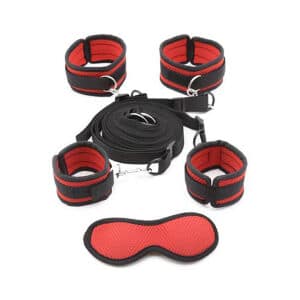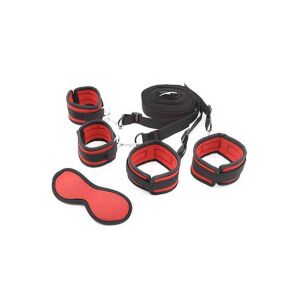Restraints and collars are essential tools in BDSM play, used to emphasize power dynamics and enhance the experience of control and submission.
Restraints: These are devices used to limit a person’s movement, typically binding wrists, ankles, or the entire body. Common restraints include handcuffs, ropes, bondage tape, and straps. Restraints can be used to create a sense of helplessness, heightening the submissive partner’s vulnerability and trust.
Collars: Often worn around the neck, collars symbolize ownership, submission, and commitment in a Dominant/submissive relationship. Collars can be simple or ornate, and some are designed to attach to leashes or chains for further control during play.
Purpose and Appeal:
Power Exchange: Restraints and collars emphasize the power dynamic, with the dominant partner exerting control while the submissive partner relinquishes it.
Enhanced Sensation: The physical restriction of movement can intensify other sensations and make the experience more thrilling.
Symbolism: Collars, in particular, often carry deep symbolic meaning, representing a submissive’s dedication and the bond between partners.
Restraints and collars are fundamental in BDSM, adding layers of control, trust, and symbolic meaning to the power exchange dynamic.




















